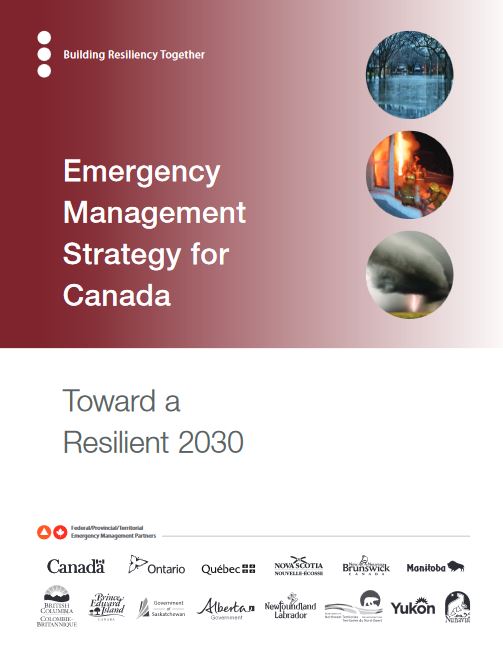Culture serves as the foundation of a community, influencing identities, traditions, and values that are transmitted across generations, ensuring cultural preservation.
The occurrence of natural disasters poses significant threats to this intricate cultural fabric, impacting cultural heritage and social resilience. This article examines the interplay between culture and catastrophe, focusing on the effects of disasters on cultural heritage and the resilience demonstrated by societies in the face of such challenges.
It highlights compelling examples of communities that have not only endured but flourished while maintaining their cultural legacies. The article also presents effective strategies for preserving cultural heritage and cultural identity in the midst of adversity, ensuring that these invaluable traditions persist despite the difficulties imposed by natural events and environmental impacts.
What is Culture and Why is it Important?
.jpg_00.jpeg)
Culture encompasses the shared values, beliefs, practices, and symbols that define a community’s way of life, playing a vital role in cultural preservation and the safeguarding of cultural identity. It serves as a foundation for social cohesion and community resilience, linking individuals to their shared history and traditions.
Understanding culture is essential, as it shapes societal dynamics and influences responses to various challenges, including natural disasters and the impacts of climate change. Recognizing the significance of cultural diversity is crucial in fostering resilient societies and promoting sustainable practices, while traditional practices, indigenous knowledge, and collective memory enhance the richness of the human experience.
The Impact of Natural Disasters on Culture
Natural disasters have a significant impact on culture, as they disrupt the preservation of cultural heritage, historical sites, and threaten the values and beliefs that unify communities.
The environmental consequences of such disasters can result in the loss of historical sites, traditional practices, and even the displacement of indigenous cultures, ultimately diminishing social cohesion and community resilience.
It is essential to understand how these events undermine cultural identity in order to develop effective disaster recovery, risk assessment, and risk management strategies.
By exploring the relationship between environmental shocks, climate change, and cultural disruption, stakeholders can gain a deeper appreciation for the importance of protecting cultural resources in times of adversity.
How Do Natural Disasters Affect Culture?
Natural disasters have the potential to significantly transform cultural landscapes, resulting in the loss of cultural heritage, cultural artifacts, and disrupting community engagement and emotional resilience. The immediate effects often include the destruction of physical structures that represent community traditions and collective memory, necessitating the adaptation of societies through new strategies for cultural revitalization.
Such upheavals compel communities to reevaluate their values and beliefs, leading to a complex interplay between disaster response, cultural preservation, and historical preservation. It is crucial to understand these dynamics in order to develop adaptive strategies that prioritize the restoration of cultural identity alongside physical reconstruction efforts.
The emotional impact can be profound, with community members frequently experiencing feelings of grief and dislocation as they confront the altered landscape of their lives.
The shared memories that once united individuals may become fragmented under the strain of loss; however, this adversity can also foster a renewed sense of unity as individuals come together to rebuild. This collective effort not only strengthens social bonds but also reinforces a visual and narrative continuity of their history, ensuring that cultural practices and stories are effectively transmitted to future generations.
As part of the recovery process, numerous communities participate in rituals, memorials, and traditional art forms that honor what was lost, transforming their grief into resilience and cultivating an environment where cultural heritage can be reassessed and celebrated anew.
Examples of Cultures Affected by Natural Disasters
Throughout history, various cultures have faced significant disruptions due to natural disasters, underscoring the vulnerability of cultural diversity and heritage sites, including intangible heritage. For example, the earthquake in Haiti in 2010 not only devastated the physical infrastructure but also deeply affected the rich tapestry of Haitian culture, leading to the implementation of urgent disaster response strategies aimed at preserving and restoring cultural practices.
Similarly, the floods in Southeast Asia have impacted indigenous cultures, resulting in the erosion of traditional knowledge, cultural representation, and communal identity. These instances highlight the crucial need to integrate cultural considerations into reconstruction efforts and disaster management planning.
In the aftermath of such calamities, response teams have frequently prioritized immediate relief over long-term cultural preservation, creating a disconnect between humanitarian initiatives and the cultural aspirations of affected communities. The 2011 tsunami in Japan serves as an illustrative case, having devastated numerous cultural sites while also inspiring initiatives focused on the preservation of traditional crafts. This reflects a growing recognition of the necessity to safeguard local heritage and implement preservation strategies.
Organizations such as UNESCO have developed programs designed to assist communities in recovering both physically and culturally, ensuring that traditions are not only restored but also allowed to flourish amidst new challenges, including post-disaster recovery. This holistic approach can effectively bridge the gap between emergency response and the complex web of cultural identity that disasters often threaten.
Lessons from Resilient Societies
.jpg_01.jpeg)
Resilient societies provide important insights into effectively addressing the challenges posed by natural disasters, highlighting the vital importance of community resilience and robust disaster management strategies in the preservation of cultural heritage.
These societies utilize social capital, relying on local knowledge, community-based approaches, and communal support to navigate crises while protecting their cultural identity and heritage.
By examining the practices and frameworks adopted by these communities, we can identify adaptive strategies that strengthen societal resilience, including urban resilience, and enhance preparedness for future environmental challenges.
It is essential to integrate cultural preservation into resilience frameworks to promote enduring stability and facilitate recovery.
What Makes a Society Resilient?
A resilient society is characterized by its capacity to endure and recover from adversities, which encompasses emotional resilience, community enablement, participatory planning, and disaster planning. Such societies adopt resilience frameworks that facilitate disaster risk reduction and promote proactive measures to protect cultural identity and heritage.
By fostering robust community networks, social networks, and enhancing public health initiatives, these societies cultivate an environment that is conducive to recovery and adaptation in the face of challenges, ensuring the preservation and revitalization of cultural values and beliefs.
This comprehensive approach underscores the interdependence of various factors, including access to resources, education, and mental health awareness, all of which collectively strengthen emotional resilience. When individuals within communities feel supported and valued, they are more inclined to participate in planning processes that enhance disaster preparedness.
As communities unite to address vulnerabilities and develop strategic responses to potential crises, they not only solidify their social cohesion but also reinforce their distinctive cultural identities, including regional identity.
Ultimately, this integration of enablement, planning, and emotional resilience establishes a strong foundation that enables societies to thrive, even when confronted with unexpected challenges.
Examples of Resilient Societies and Their Cultural Preservation Efforts
Examining examples of resilient societies reveals a variety of strategies for cultural preservation, cultural revival, and revitalization in the face of natural disasters. For instance, the community traditions of the Māori in New Zealand exemplify the integration of local governance and storytelling in maintaining cultural identity while adapting to environmental changes.
Similarly, the resilience demonstrated by communities in Japan following earthquakes showcases effective heritage management practices that not only reconstruct physical structures but also restore cultural memory and values. These cases underscore the significance of fostering cultural revitalization through targeted initiatives and community engagement, including community adaptation.
A notable example is the response of indigenous communities in the Andaman Islands after the 2004 tsunami, where they emphasized traditional knowledge and practices to restore their livelihoods. These communities initiated programs that prioritized cultural education and local craftsmanship, aiding in the reconstruction of their social fabric.
Equally important is the role of community engagement in Mexico, where local organizations mobilized in the aftermath of earthquakes to not only repair buildings but also revive traditional music, dance, folklore, and festivals. Such efforts foster a sense of unity and shared identity among community members.
These initiatives highlight that cultural continuity is essential for community resilience, enabling societies to emerge from disasters stronger and more cohesive.
Strategies for Preserving Culture in the Face of Natural Disasters
The implementation of effective strategies for preserving culture in the context of natural disasters is crucial for maintaining cultural identity, heritage protection, and heritage conservation.
These strategies encompass a blend of disaster management methodologies, community engagement efforts, and sustainable development practices designed to safeguard cultural resources and heritage protection.
By prioritizing preservation initiatives that incorporate education and awareness programs, communities can bolster their resilience and preparedness for future challenges, thereby ensuring that cultural values and traditions persist despite external disruptions. This approach supports social cohesion and community resilience.
1. Documentation and Preservation of Cultural Heritage
.jpg_10.jpeg)
The documentation and preservation of cultural heritage are essential in safeguarding identity and resources within communities affected by natural disasters. Efforts to archive cultural artifacts, narratives, and traditional practices ensure the preservation of collective memory, enabling communities to reconstruct their cultural foundations following a disaster. This contributes to disaster recovery and cultural identity preservation.
Heritage conservation initiatives promote collaboration among stakeholders to effectively manage cultural resources, thereby enhancing community resilience, fostering a sense of place attachment, and supporting cultural continuity.
These initiatives not only document a community’s history but also enable individuals by cultivating a shared understanding of their cultural identity. For instance, recovery efforts in regions severely impacted by hurricanes have frequently included comprehensive digitization projects that capture oral histories and critical artifacts that may otherwise be lost. Such efforts are crucial for post-disaster recovery and social resilience.
The successful collaboration between local organizations and international heritage experts serves as a model for effective practices in future preservation efforts. By securing funding and mobilizing volunteers, these projects illustrate the significance of community engagement in cultural resource management, ensuring that both tangible and intangible heritage can thrive for generations to come. This highlights the importance of collaborative efforts and community-based approaches in heritage conservation.
2. Community Involvement and Education
Community involvement and education are essential elements of cultural sustainability, ensuring that individuals are actively engaged in the preservation of their heritage. Educational initiatives centered on local knowledge and traditional knowledge enable community members to take ownership of cultural practices, fostering a deeper understanding of their significance.
By promoting participatory planning approaches, communities can collaboratively develop strategies that enhance their resilience and safeguard cultural values for future generations. This process involves capacity building and risk assessment to ensure effective implementation.
Programs that engage schools in cultural education, such as workshops focusing on traditional arts and storytelling, play a vital role in bridging generational gaps and ensuring that younger members appreciate their cultural roots. Initiatives like community festivals celebrate local traditions and provide immersive experiences for both residents and visitors, thereby reinforcing communal bonds and social networks.
Collaborative projects that invite community members to contribute to cultural documentation not only protect local knowledge but also inspire a sense of collective memory. Through these participatory efforts, communities honor their past while simultaneously creating a vibrant cultural landscape that is both adaptive and enduring. This approach supports cultural transmission and long-term recovery.
3. Incorporation of Cultural Knowledge into Disaster Preparedness Plans
Incorporating cultural knowledge into disaster preparedness plans is essential for enhancing community resilience and effective risk management. By recognizing and valuing local customs and practices, emergency preparedness initiatives can be tailored to align with the unique cultural context of various communities. This strategy supports disaster planning, risk mitigation, and urban resilience.
This approach not only strengthens adaptive strategies but also fosters a sense of ownership and commitment among community members regarding their disaster response efforts. Leveraging indigenous knowledge and regional identity enhances the effectiveness of these plans.
For example, communities with strong traditions of communal gatherings can leverage these events to conduct training sessions and distribute resources effectively. Local leaders may engage in storytelling to convey important safety information, thereby making it more relatable and memorable for residents. Additionally, adjusting communication methods to include native languages or dialects can ensure that critical messages reach all individuals. This approach also supports cultural representation and emergency response.
By involving cultural representatives in the planning process, authorities can identify specific vulnerabilities that may arise from longstanding practices, facilitating comprehensive risk management tailored to the community’s needs. This involvement helps in vulnerability assessment and the implementation of effective preservation strategies.
4. Sustainable Development and Cultural Preservation
Sustainable development and cultural preservation are intrinsically linked, as both strive to advance ecological conservation and social justice within communities. This synergy supports climate resilience and the integration of cultural sustainability into broader development goals.
By implementing practices that honor cultural values and strengthen local networks, communities can cultivate a comprehensive approach to development that acknowledges the significance of cultural identity. This synergy not only safeguards heritage sites but also bolsters community resilience, social capital, and cohesion in the face of natural disasters.
For example, initiatives such as the UNESCO World Heritage Sites program illustrate the integration of ecological and cultural preservation by promoting sustainable tourism that supports local economies while protecting traditional practices. Such initiatives also highlight the importance of cultural diversity and historical preservation.
Community-driven projects, such as the establishment of eco-museums, encourage residents to actively engage with their heritage and environment, thereby fostering a sense of pride and responsibility for both. These projects support social innovation and grassroots movements in heritage conservation.
These initiatives highlight the essential connection between social justice and cultural preservation. By enabling communities to take ownership of their heritage, these efforts not only enrich the cultural tapestry but also contribute to the overarching objective of achieving ecological sustainability and cultural revival.
Frequently Asked Questions
.jpg_11.jpeg)
1. How do natural disasters impact cultural heritage and cultural landscapes?
Natural disasters can cause immense damage to cultural heritage sites and objects, leading to the loss of unique and irreplaceable pieces of a society’s history and identity. This can include damage to historic buildings, artifacts, and even intangible cultural practices and knowledge. The environmental impact of such disasters can further exacerbate the challenges of cultural preservation.
2. What can we learn from resilient societies and their recovery models about preserving culture in the face of natural disasters?
Resilient societies have developed techniques and strategies for protecting and preserving their cultural heritage in the face of natural disasters. By studying these societies, we can learn about effective methods for disaster preparedness, response, and recovery that can help us safeguard our own cultural heritage. Their practices offer valuable insights into risk assessment and community adaptation.
3. How can incorporating traditional knowledge and practices help in preserving culture during natural disasters?
Many resilient societies have found that incorporating traditional knowledge and practices into disaster preparedness and response plans can be incredibly effective. This can include techniques for protecting and repairing historic buildings, as well as utilizing traditional wisdom for predicting and surviving natural disasters.
4. What is the role of technology in preserving culture during and after natural disasters and in supporting disaster relief?
Technology can play a crucial role in preserving culture during and after natural disasters. For example, satellite imagery and remote sensing can be used to assess damage to cultural heritage sites and plan for their protection and restoration. Social media and online platforms can also be used to raise awareness and support for cultural heritage preservation efforts. Additionally, digital tools can facilitate cultural transmission and the safeguarding of intangible heritage.
5. What are some challenges faced by societies in preserving culture during natural disasters and in maintaining historical continuity?
One of the biggest challenges in preserving culture during natural disasters is the lack of resources and funding for disaster preparedness and recovery efforts. Additionally, conflicts and political instability in affected areas can also hinder preservation efforts. The unpredictability and intensity of natural disasters can also make it difficult to plan and protect cultural heritage in advance. Preservation challenges also include managing cultural diversity and addressing the health impacts of disasters.
6. How can individuals and organizations contribute to preserving culture in the face of natural disasters and in supporting cultural advocacy?
There are various ways that individuals and organizations can contribute to preserving culture in the face of natural disasters. This can include volunteering time and resources to assist with disaster preparedness and response efforts, supporting organizations that work towards cultural heritage preservation, and advocating for policies and funding to protect cultural heritage sites and objects. Engaging in heritage education and promoting global perspectives can further strengthen these efforts.

My name is Bruno, I have been a writer for 5 years and I work with website creation. My goal is to provide true information to readers. In fact, on this site I write about cultures and traditions, which I have been passionate about since childhood.




